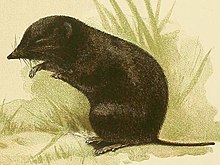Hylomyscus is a genus of rodent in the family Muridae endemic to Africa.
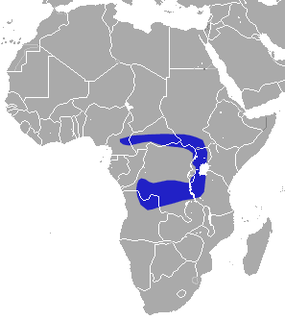
Roosevelt's shrew is a species of mammal in the family Soricidae. It is found in Angola, Cameroon, Central African Republic, Democratic Republic of the Congo, Rwanda, Tanzania, and Uganda. Its natural habitat is moist savanna.

The Kahuzi swamp shrew is a species of mammal in the family Soricidae found in the Democratic Republic of the Congo. Its natural habitat is swamp. It is threatened by habitat loss.

Babault's mouse shrew is a species of mammal in the family Soricidae found in Burundi, the Democratic Republic of the Congo, and Uganda. Its natural habitat is subtropical or tropical moist montane forests. It is threatened by habitat loss.
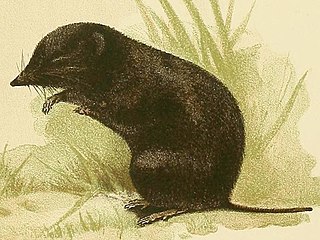
The montane mouse shrew is a species of mammal in the family Soricidae endemic to Uganda. Its natural habitats are subtropical or tropical moist montane forests and swamps. It is threatened by habitat loss.
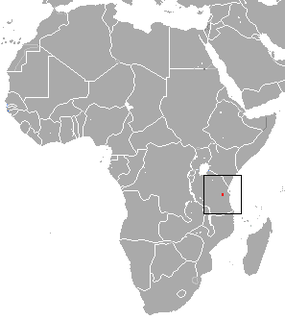
The Geata mouse shrew is a species of mammal in the family Soricidae endemic to Tanzania. Its natural habitat is subtropical or tropical moist montane forests.

Schaller's mouse shrew is a species of mammal in the family Soricidae endemic to the Democratic Republic of Congo. Its natural habitat is subtropical or tropical moist montane forests.

The greater large-headed shrew is a species of mammal in the family Soricidae. It is found in Burundi, Democratic Republic of the Congo, Rwanda, and Uganda. Its natural habitats are subtropical or tropical moist lowland forest, subtropical or tropical moist montane forest, and swamps. It is threatened by habitat loss.
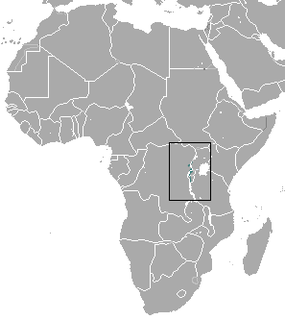
The Ruwenzori shrew is a species of mammal in the family Soricidae. It is monotypic within the genus Ruwenzorisorex. It is found in Burundi, Democratic Republic of the Congo, Rwanda, and Uganda. It is semiaquatic, living along streams in tropical cloud forest.
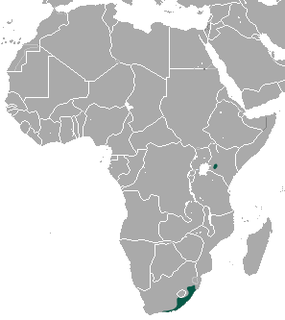
The least dwarf shrew is a species of mammal in the family Soricidae. It is found in Cameroon, Central African Republic, Democratic Republic of the Congo, Kenya, Nigeria, South Africa, Eswatini, Tanzania, and Uganda. Its natural habitats are subtropical or tropical moist lowland forest, subtropical or tropical moist montane forest, temperate grassland, subtropical or tropical dry lowland grassland, subtropical or tropical high-altitude grassland, and arable land.

The greater dwarf shrew is a species of mammal in the family Soricidae. It is found in Angola, Botswana, Democratic Republic of the Congo, Kenya, Malawi, Namibia, Tanzania, Zambia, and Zimbabwe. Its natural habitats are subtropical or tropical dry forests and dry savanna. It is present in several protected areas, including the Kruger National Park. The main threat to shrews is the loss or degradation of moist, productive areas such as wetlands and rank grasslands within suitable habitat.
Surdisorex is a genus of mammals in the family Soricidae. Surdisorex is one of three genera of African shrews, which, in turn, are one of three living subfamilies of shrews. Species in the genus Surdisorex are called African mole shrews because of their similarity to moles, to which they are not closely related.

Grant's forest shrew is a species of mammal in the family Soricidae found in the mountain forests of central Democratic Republic of the Congo, Kenya, Rwanda, Tanzania, and Uganda. Its natural habitat is subtropical or tropical moist montane forests.

Johnston's forest shrew is a species of mammal in the family Soricidae found in Burundi, Cameroon, the Central African Republic, the Republic of the Congo, the Democratic Republic of the Congo, Equatorial Guinea, Gabon, Rwanda, Tanzania, and Uganda. Its natural habitats are subtropical or tropical moist lowland forest and subtropical or tropical moist montane forest. It is threatened by habitat loss.

The moon forest shrew is a species of mammal in the family Soricidae. It is found in Burundi, Rwanda, and Uganda. Its natural habitat is subtropical or tropical moist montane forests.

The volcano shrew is a species of mammal in the family Soricidae found in the high-altitude rainforest of Burundi, eastern Democratic Republic of the Congo, Rwanda, and Uganda. Its natural habitats are subtropical or tropical moist montane forests and swamps. Its type locality is Rwanda, Parc National des Volcans, Karisoke.

According to the current taxonomy, the Myosoricinae are a subfamily of shrews. As such, they form one of three main types of shrews, the other two being the red-toothed shrews and the white-toothed shrews. They are the only one of the three to be found exclusively south of the Sahara Desert, and so they have been described in English as the African shrews, but also many white-toothed shrews are in Africa and therefore this term is more generally used for shrews from Africa in general. The subfamily has three genera and 20 species:
William T. "Bill" Stanley was an American mammalogist who was a manager of the collections at one of the world's largest natural history museums and a student of the mammals of eastern Africa. He was an evolutionary biologist and mammalogist, and at the time of his death was the Director of the Field Museum of Natural History's Collections Center and the Collection Manager of the Field Museum's Collection of Mammals. Stanley studied the biogeography, ecology, evolution, and systematics of shrews, bats and rodents that live on mountains within Tanzania and surrounding countries.
Represented by a single specimen, the Mount Elgon mole shrew is a species of African mole shrew known to date only from the ericaceous zone of Mt. Elgon in Western Kenya. In 1984, a specimen of the genus Surdisorex was collected on a footpath at 3,150 m (10,330 ft) of the Kenyan slope of Mt. Elgon. It was described as the third member of the genus Surdisorex by Kerbis Peterhans et al. (2009). On the basis of skull length measurements, Surdisorex schlitteri is intermediate between S. norae and S. polulus in size. The scientific name honors Dr. Duane Schlitter, in recognition of his substantial contributions to the understanding of African small mammals and his longstanding support of Kenyan scientific research. The Mount Elgon mole shrew is listed as "data deficient" because it is only known from a single specimen.
The Bururi forest shrew is a species of mouse shrew native to Burundi. It was first described by Peterhans et al. in 2010, and is defined by a broad hexagonal skull, short tail, and long claws.
